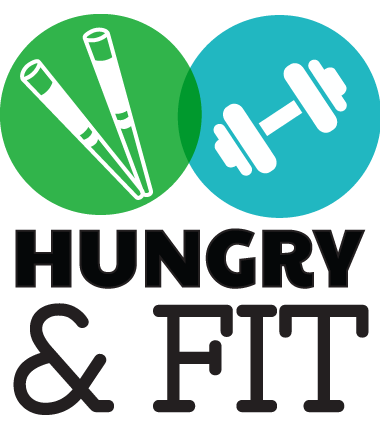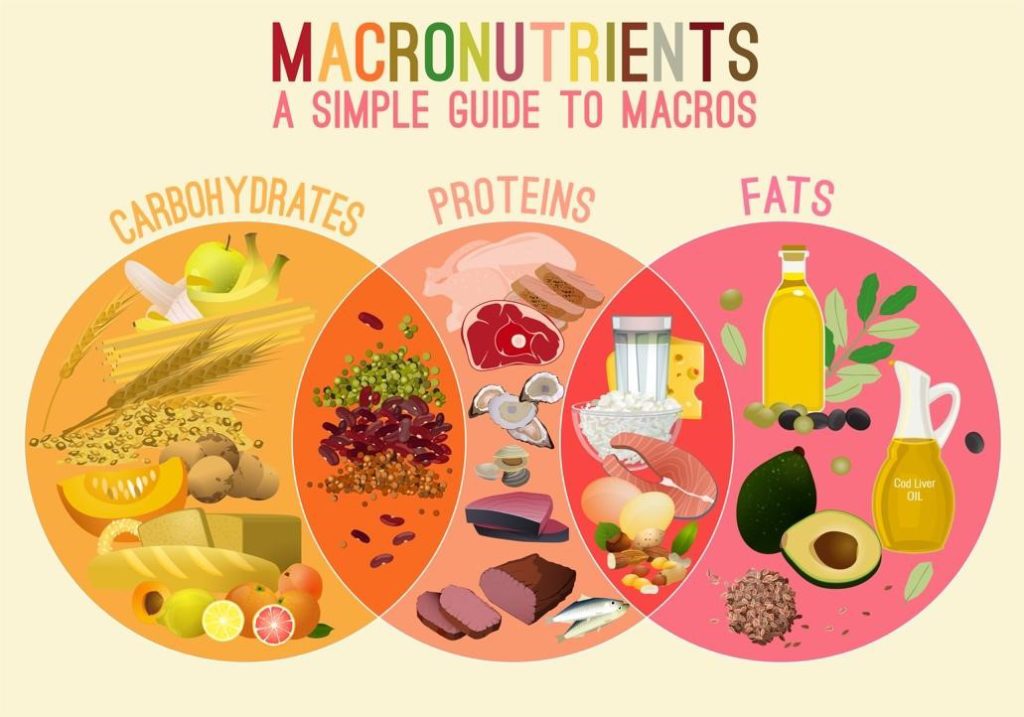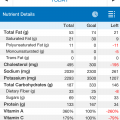[Please enjoy a guest article from former NFL player, Chris Gronkowski!]
Starting a new diet can be a difficult adjustment and part of the change involves becoming accustomed to a new routine and way of thinking about food. Counting calories is an accurate but sometimes challenging method for tracking what you consume each day. If your goal is to lose weight, you’ll want to record how many calories you eat and work to burn off more calories. For some people, this dieting method is tedious and easy to forget about. But those willing to stick to a strict approach may want to take it one step further and experiment with counting their macro calories.
What Is a Macro Diet?
Following a macro diet is similar to the process of counting calories but, instead, you must focus on tracking how much you consume of the three macronutrients—protein, carbohydrates and fats. One of the major benefits of counting macros is that you are compelled to consume only foods that are fueling your body in some respect. For example, if you were on a calorie-counting diet, you could eat a bag of potato chips as long as you write down the calorie count. But, with a macro-counting diet, you would want to replace the chips with a food heavier in protein, carbs or fats.
Macronutrients are vital to our body’s well-being, and they can be found in nearly every food. Most items though are classified by whichever macronutrient they have the most of—for example, beef is considered a protein even though it also contains fats. Counting macros has been a popular practice amongst athletes for many years but, as of late, people have found this method to be a beneficial way to hold themselves to healthy eating habits.
Why Use This Form of Dieting?
Whether you’re trying to bulk up or slim down, counting macros is a useful means of reaching your fitness goals. Fitness trainers often quote the saying: “Get fit in the gym, lose weight in the kitchen.” This kind of philosophy rings true. In order to get your body in the healthiest state possible, you need to give thought to both your exercise routines and your diet.
When you are simply counting the calories that you consume in whatever form they may take, you’re not really considering how each food item is affecting your overall health. You can certainly lose weight by doing this but counting macros is a much more efficient method. Protein is one of the most essential components of any diet, particularly for active people because it is what fuels your body and aids your muscles through the re-growth process. Carbs and fats also contribute greatly to your energy levels and disease prevention.
When it comes to dropping pounds, counting macros will help you to determine a goal and stick to it without overconsuming any one nutrient while making it possible to burn these calories off quickly. During a macro diet, you’ll likely have to up your daily protein intake, which research has proven to expedite fat loss.
Investing in a well-made protein shaker and integrating protein shakes into your diet is an excellent way to consume more protein and keep your calorie count low. For those hoping to gain muscle, counting macros will help you create a healthy calorie surplus intended to build muscles, particularly by introducing more good carbohydrates to your diet.
What Are Macronutrients and Why Do You Need Them?
Protein
As we all know, protein is one of the most important sources of nourishment we get from each meal. Without the proper amount of protein, people experience serious side effects, including hair and nail issues, extreme fatigue, muscle weakness, depression and, oddly, an ever-present feeling of hunger. Made up of amino acids, protein is the building block for virtually every cell in your body.
During a workout, small tears are created in your muscles and protein helps to repair and grow these. Typically, protein comes from chicken, beef or fish, but it’s possible to incorporate other plant-based foods high in protein into your diet, including quinoa and chickpeas. You can also find dozens of tasty protein shake recipes to work into your diet. Protein powder is perfect for satiating hunger, providing your body with energy and maintaining a low-calorie count.
Carbohydrates
In the world of health and fitness, there is a lot of controversy around carbohydrates. Are they healthy? Should you avoid carbs altogether? While many of today’s trendy diets scare people away from carbs, and some even recommend cutting them out of your diet completely, carbs are actually a very important part of eating healthy. That being said, not all carbohydrates are good for you. You need to learn how to identify the difference between beneficial and harmful carbs before delving into your macro diet.
The main purpose of carbs is to produce glucose, which is stored in your muscles as glycogen and used as energy. When you exercise, you’re burning off this glucose and your store of energy must be replenished with more carbs afterwards. Healthy carbs can be found in fruits and veggies as well as grains. When selecting carbs to eat on your macro diet, bear in mind that you want to consume carbs with more health benefits. Opt for the whole wheat bread over white for a more nutritious choice.
Fats
Much like carbs, fats can get a bad rap, but not all types of fats are bad for your health either. When counting macros, you’ll want to integrate foods with a combination of saturated and unsaturated fats. While some nutritionists believe that too much saturated fat can lead to issues like heart disease, you can still consume these foods in moderation. Products like beef, poultry, dairy and certain types of oil contain saturated fats while plants, vegetable oil, nuts and seeds are filled with unsaturated fats. If you’re counting macros to get yourself into healthier eating habits, you should avoid foods with trans-fats—considered the negative type of fat—which is usually found in processed food items like potato chips, frozen pizza and baked goods.
Basic Tips for Counting Macros
If you’re still interested in starting a macro diet, the first step is to create a goal for yourself. For most people, this means determining a percentage or range goal for how much of each macronutrient they want to consume each day.
You’ll have to calculate this number on your own as it’s specific to each person’s fitness goals, current weight, metabolism rate and current level of physical activity. To get you started, use a macro calculator to determine the amount of each macronutrient you need to consume. Then, do some research on your own to learn more about foods rich in each of the three macronutrients.











